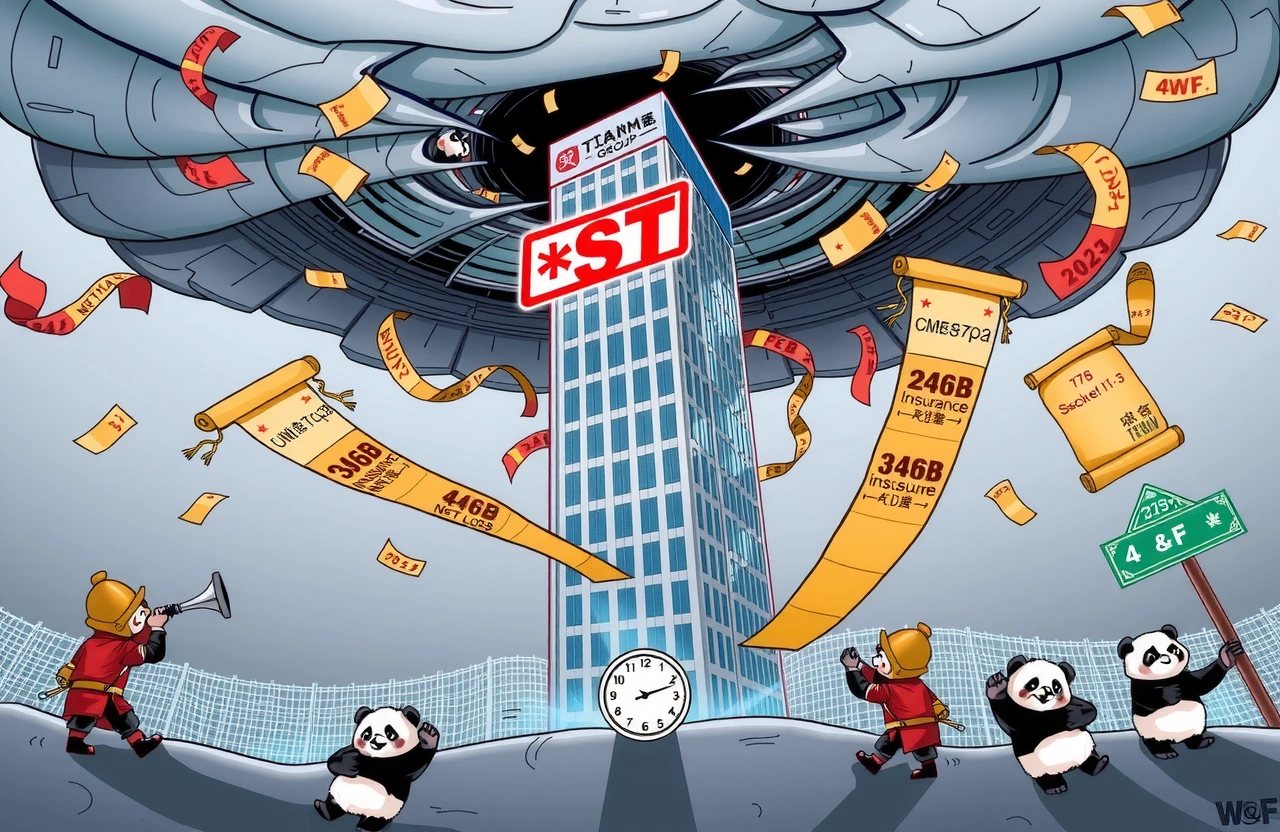The Critical Junction for Tianmao Group
Ticker symbol 000627 enters fraught territory as Tianmao Group announces its July 8 return to trading with a *ST delisting risk warning, the scarlet letter of China’s capital markets. This drastic measure by the Shenzhen Stock Exchange follows the company’s prolonged failure to disclose legally mandated financial statements – including its 2024 annual report and 2025 first-quarter filings. Though the parent firm maintains normal operations alongside subsidiaries Guohua Life Insurance Co., Ltd. and Huarui Insurance Sales Co., Ltd., this regulatory reckoning compounds existing financial pressures amid broader sector volatility.
Summary of Key Developments
- Tianmao Group stock resumes trading on July 8 with *ST designation after extended suspension
- Shenzhen Stock Exchange imposed delisting risk warning due to unreported 2024 annual and 2025 Q1 financials
- China Securities Regulatory Commission (CSRC) opened investigation for disclosure violations on May 6
- Company forecasts 2024 net loss of 500-750 million yuan amid insurance sector headwinds
Regulatory Timeline Deepening Delisting Risk
Shenzhen Stock Exchange regulations mandate strict adherence to disclosure timelines, and Tianmao Group’s failure to publish both its 2024 annual report and Q1 2025 report triggered an initial suspension on May 6. When two months passed without resolution, regulators escalated to delisting risk procedures. This event path demonstrates China’s toughened oversight framework post-2020 capital market reforms prioritizing transparency.
The Mechanics of *ST Designation
Asterisk-ST (‘Special Treatment’) labeling forces immediate repercussions: daily price fluctuations get capped at 5% instead of 10%, shares move to risk-warning boards, and institutional investors often face mandatory sell-offs. For Tianmao Group shareholders, this compounds existing value erosion as shares transition from ‘Tianmao Group’ to ‘*ST Tianmao’ designation.
Business Model Vulnerabilities Exposed
Tianmao Group operates as an investment holding entity with 90% of revenues accruing from insurance subsidiaries – chiefly Guohua Life Insurance. This structure creates inherent disclosure complexities. Guohua Life remains pivotal despite contributing to losses, generating 346.39 billion yuan in 2024 premium income through strategic pivots toward long-term protection products.
Core Stability Amid Reporting Paralysis
Company statements stress operating subsidiaries function normally despite parental reporting failures. Insulated operational teams allowed Guohua Life to optimize product mixes targeting policy-value growth, though commodity-sector obstacles manifested internally.
The Perfect Storm Driving Losses
Tianmao Group’s projected 500-750 million yuan net loss continues consecutive annual losses, intensified by an adverse macroeconomic climate. The critical factor emerged through insurance accounting mechanisms compounding monetary policy constraints.
The Liability Calculation Crunch
Insurance regulation mandates reserves calculated against China’s 750-day moving average of government bond yields. When this benchmark persistently declined throughout 2024, Guohua Life automatically faced reserve requirement spikes – necessitating higher payouts irrespective of premium collection efficiency. Though product restructuring improved new business value, the interest-rate drag proved unconquerable.
The CSRC Investigation Response Landscape
May 6’s formal investigation unveils regulatory rigor. CSRC probes hinge on Securities Law Article 197 violations regarding disclosure timelines, carrying maximum penalties including 10 million yuan fines and executive market bans.
Corporate Mitigation Strategies
Tianmao Group committed to accelerating report verification, but historical precedent shows recovery complexity once sanctions escalate beyond warnings. Notably, pharmaceutical giant Kangmei faced criminal prosecutions following similar disclosure failures.
Shareholder Ramifications and Forward Scenarios
Individual investors holding Tianmao Group securities navigate treacherous terrain. *ST-labeled stocks require exchange compliance within four months or face termination procedures – a tight deadline complicated by CSRC investigations.
The Three Likelihood Outcomes
- Scenario one: Timely report submission satisfies regulators by October for warning removal
- Scenario two: Disclosure delays trigger suspended listing for investigation period
- Scenario three: Findings of intentional fraud prompt forceful delisting and restructuring
Navigating Exposure During Regulatory Uncertainty
*ST institutions demand heightened investor vigilance. Prioritize verification of underlying asset operations – like Guohua Life’s premium stability – to discern solvency versus temporary disruptions. Monitor global sovereign yield trends impacting reserves alongside quarterly CSRC enforcement reports assessing violation severities.



